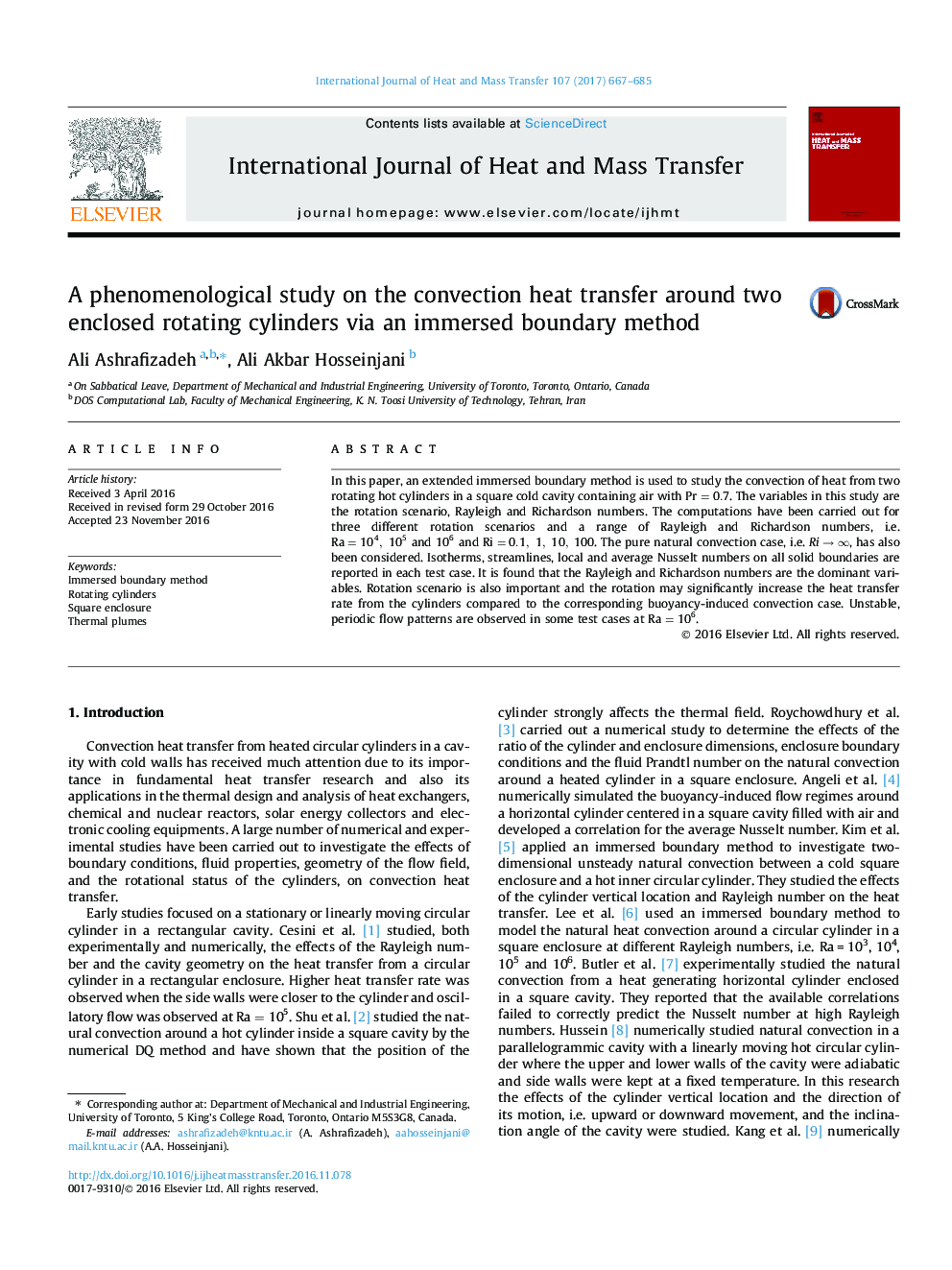| Article ID | Journal | Published Year | Pages | File Type |
|---|---|---|---|---|
| 4994620 | International Journal of Heat and Mass Transfer | 2017 | 19 Pages |
Abstract
In this paper, an extended immersed boundary method is used to study the convection of heat from two rotating hot cylinders in a square cold cavity containing air with Pr=0.7. The variables in this study are the rotation scenario, Rayleigh and Richardson numbers. The computations have been carried out for three different rotation scenarios and a range of Rayleigh and Richardson numbers, i.e. Ra=104,105and106 and Ri=0.1,1,10,100. The pure natural convection case, i.e. Riââ, has also been considered. Isotherms, streamlines, local and average Nusselt numbers on all solid boundaries are reported in each test case. It is found that the Rayleigh and Richardson numbers are the dominant variables. Rotation scenario is also important and the rotation may significantly increase the heat transfer rate from the cylinders compared to the corresponding buoyancy-induced convection case. Unstable, periodic flow patterns are observed in some test cases at Ra=106.
Related Topics
Physical Sciences and Engineering
Chemical Engineering
Fluid Flow and Transfer Processes
Authors
Ali Ashrafizadeh, Ali Akbar Hosseinjani,
